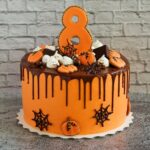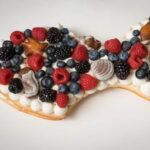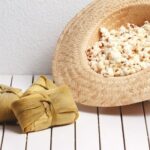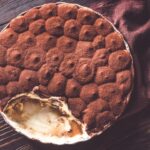When it comes to cake decorating, choosing the right frosting is just as crucial as selecting a delectable cake recipe. Frosting not only adds a beautiful finishing touch to the cake’s appearance, but it also enhances its taste and texture.
In this article, we will delve into various types of frostings that are commonly used in cake decorating, exploring their unique qualities and discussing their suitability for different styles. By understanding the role of frosting in cake decorating, you can elevate your baking skills and create visually stunning and delicious creations.
The type of frosting you choose can make or break the overall aesthetic appeal of your cake. A good frosting choice has the power to transform a simple homemade cake into a professional-looking masterpiece. It can turn an ordinary dessert into a visually stunning centerpiece that leaves a lasting impression on your guests’ taste buds.
Furthermore, frosting plays a significant role in enhancing the flavor profile of your cake. Whether you prefer buttery and rich flavors or light and tangy delights, selecting the right frosting can elevate the taste experience for everyone indulging in your creation.
In the following sections, we will explore various kinds of frostings commonly used in cake decorating, including classic options like buttercream and cream cheese frosting, as well as alternative choices like fondant and whipped cream. We will discuss their unique characteristics, advantages, challenges, and even provide tips on achieving perfect consistency and flavor balance. So let’s dive into the world of frostings and discover which one is best suited for your ultimate cake decorating vision.
Buttercream Frosting
Buttercream frosting is a classic choice for cake decorating, known for its smooth texture and ability to hold intricate designs. It is made by combining butter, sugar, and flavorings such as vanilla extract. The popularity of buttercream frosting lies in its versatility, as it can be easily flavored and colored to suit any occasion or theme.
One of the variations of buttercream frosting is Swiss meringue buttercream, which is made by heating egg whites and sugar until they reach a specific temperature, then whipping them to form a stable meringue. Italian meringue buttercream follows a similar process but involves adding hot sugar syrup to the whipped egg whites. American buttercream, on the other hand, is made by simply creaming together butter and powdered sugar.
There are pros and cons to using buttercream frosting in cake decorating. One advantage is its ability to hold shape well, making it ideal for intricate piping work and decorative toppings. Additionally, it has a rich and creamy taste that complements a wide range of cake flavors. However, one limitation of buttercream frosting is that it can melt easily in warm temperatures or when applied too generously on the cake.
To overcome this challenge, some bakers choose to refrigerate their cakes with buttercream frosting before serving to enhance its stability. Another tip is to use high-quality ingredients, especially when making meringue-based buttercreams, as this can contribute to achieving a smoother texture.
Cream Cheese Frosting
Cream cheese frosting is a popular choice in cake decorating due to its rich and tangy flavor. This type of frosting pairs well with a variety of cakes, from classic red velvet to moist carrot cake. Cream cheese frosting has a unique texture that falls somewhere between traditional buttercream and whipped cream frostings, making it versatile for different decorating styles.
One of the main advantages of using cream cheese frosting is its smooth and creamy texture. It spreads easily onto cakes, allowing for effortless application and smooth finishes. Additionally, cream cheese frosting can be easily piped into various designs such as rosettes or borders, adding an elegant touch to the overall look of the cake.
To achieve the perfect consistency and flavor balance when making cream cheese frosting, there are a few tips to keep in mind. First, it is important to use room temperature ingredients to prevent any lumps or clumps in the frosting. Softened butter and cream cheese will blend together more smoothly, resulting in a creamy and velvety texture.
Another tip is to gradually add powdered sugar while mixing the frosting. This will help you achieve the desired sweetness without making it overly sugary. Additionally, adding a splash of vanilla extract can enhance the flavor profile of the frosting.
Overall, cream cheese frosting is a delightful choice for cake decorating that offers richness and tanginess to complement a variety of flavors. Whether you’re looking for an indulgent finish on a classic red velvet cake or adding a twist to your carrot cake creation, cream cheese frosting provides both aesthetic appeal and delectable taste that can elevate your cake decorating skills.
Fondant
Fondant is a versatile and popular choice for cake decorating, especially when it comes to creating intricate designs and creations. Unlike traditional frostings, fondant provides a smooth and professional finish that allows you to achieve flawless results. Whether you are looking to create a wedding cake masterpiece or a whimsical birthday cake, fondant offers endless possibilities for creativity.
One of the key advantages of using fondant is its ability to provide a blank canvas for your imagination. With fondant, you can cover your cake with a perfectly smooth layer that serves as the foundation for any design or decoration.
This makes it ideal for creating elaborate and intricate details such as flowers, bows, ruffles, and even lifelike figures. Fondant also allows for easy color customization, making it possible to achieve vibrant and bold colors that may be difficult to achieve with other frostings.
Working with fondant may seem intimidating at first, but with practice and the right techniques, anyone can master this art form. It is important to prepare your cake properly before applying the fondant by ensuring it is well-chilled and leveled for an even surface. It is also essential to use powdered sugar or cornstarch on your work surface to prevent sticking when rolling out the fondant.
While fondant may offer many benefits in terms of design possibilities, there are some considerations to keep in mind. Fondant has a distinct taste and texture that may not appeal to everyone. It can be sugary sweet and chewy compared to other frosting options. Additionally, working with large amounts of fondant can be time-consuming and may require extra effort for kneading and rolling out.
Whipped Cream Frosting
Whipped cream frosting is a popular choice in cake decorating for its light and airy texture. It adds a delicate touch to cakes, making them feel light and refreshing. This type of frosting is made by whipping heavy cream until it thickens and forms soft peaks. It is then sweetened with sugar and flavored with vanilla or other extract flavors.
Ideal Situations for Whipped Cream Frosting
Whipped cream frosting works best when used on lighter cakes such as angel food or chiffon cakes. Its lightness complements these types of spongy cakes, adding an extra layer of flavor without overpowering the delicate texture. Whipped cream frosting is also perfect for summer-themed cakes or desserts, as its fluffiness gives a refreshing sensation reminiscent of whipped ice cream.
Challenges in Working with Whipped Cream Frosting
One challenge when using whipped cream frosting is its stability. Unlike buttercream or fondant, whipped cream frosting is more prone to deflating or melting if not handled properly. It is important to keep the frosting refrigerated until ready to use and only frost the cake moments before serving. Additionally, whipped cream frosting should not be exposed to warm temperatures for too long, as it can lose its shape and become runny.
Flavor Combinations with Whipped Cream Frosting
Whipped cream frosting pairs well with a variety of flavors. Popular combinations include fresh berries like strawberries or blueberries, chocolate ganache drizzle, or even citrus zest for a zesty twist. The lightness of the whipped cream allows these flavors to shine through without overwhelming the palate.
To achieve the ideal texture for whipped cream frosting, it’s important to whip the heavy cream until stiff peaks form but not overbeat it, as this can result in a grainy consistency. By keeping the icing tools chilled and handling with care while decorating the cake, you can ensure that the whipped cream frosting maintains its light and fluffy appearance.
Ganache
Ganache is a rich and decadent frosting option that adds an extra touch of elegance to any cake. Made from a combination of chocolate and cream, ganache provides a smooth, glossy finish that is perfect for creating luxurious designs. It can be used as both a frosting and a filling, making it a versatile choice for cake decorators.
To make ganache, simply heat cream until it starts to simmer, then pour it over chopped chocolate. Allow the mixture to sit for a few minutes before stirring until smooth and well combined. The ratio of chocolate to cream can be adjusted to achieve different consistencies – more cream will result in a thinner ganache, while more chocolate will yield a thicker consistency.
When using ganache as a frosting, it’s important to keep in mind its composition. Ganache sets as it cools, so it’s crucial to work quickly when spreading or piping it onto the cake. If the ganache becomes too thick or firm, gently reheat it over low heat or in short bursts in the microwave until it reaches the desired consistency again.
One benefit of using ganache is its versatility in creating various cake styles. It can be poured over cakes for a luscious glaze-like finish or used as a smooth coating underneath fondant or other decorations. Ganache can also be whipped into fluffy peaks for piping intricate designs or delicate rosettes onto cupcakes.
Meringue Frosting
Meringue frostings, such as Italian or Swiss meringue, are often sought after for their light and glossy appearance. Made from whipped egg whites and sugar, these frostings create a beautiful finish on cakes that is both delicate and elegant.
One of the unique properties of meringue frostings is their ability to hold their shape well, making them perfect for decorative piping work. Whether you’re creating intricate patterns or simple rosettes, meringue frostings offer a smooth and glossy finish that adds a touch of sophistication to any cake design.
However, working with meringue frostings does come with its own set of challenges. The main concern is achieving the ideal glossy finish while maintaining stability. Over-whipping the egg whites can result in a grainy texture, while under-whipping may lead to a less stable frosting that won’t hold its shape or provide the desired glossiness.
To achieve the perfect meringue frosting consistency, it’s essential to follow a few key tips. Firstly, make sure all utensils used are clean and free from any traces of grease as this can affect the stability of the egg whites. Additionally, you can add cream of tartar or lemon juice to help stabilize the whipped egg whites.
For an extra touch of flavor, you can also add extracts like vanilla or almond to your meringue frosting. These additions not only enhance the taste but also provide versatility for pairing with different cake flavors.
In summary, meringue frostings offer a light and glossy finish that adds an elegant touch to cake decorating. While they do require proper technique and attention to detail to achieve optimal results, mastering these frostings can elevate your cake designs to new heights of sophistication and visual appeal.
Key Points:
- Meringue frostings provide a light and glossy finish.
- They are perfect for decorative piping work.
- Achieving the ideal glossy finish requires proper technique and attention to detail.
- Clean utensils and stable egg whites are crucial for success.
- Flavor extracts can be added for additional taste versatility.
Vegan and Dairy-Free Frosting Options
As the demand for vegan and dairy-free options continues to grow, it is important to explore frosting alternatives that cater to individuals with dietary restrictions. Fortunately, there are numerous options available that are both inclusive and delicious. From plant-based fats to creative substitutions, vegan and dairy-free frostings can elevate the taste and appearance of any cake.
One popular option for vegan and dairy-free frostings is coconut cream. Coconut cream has a rich and creamy texture that makes it an excellent substitute for traditional dairy products. It can be whipped just like regular cream and can be flavored with various ingredients such as vanilla extract or cocoa powder. Coconut cream frosting adds a tropical twist to cakes, making it ideal for fruity flavors or chocolate-based cakes.
Another common alternative is cashew-based frosting. Soaked cashews can be blended into a smooth paste that mimics the consistency of traditional cream cheese frosting. This allows individuals with dietary restrictions to still enjoy the tangy delight of cream cheese frosting without compromising their food choices. Cashew-based frostings can be customized with flavorings such as lemon juice or almond extract to add an extra level of complexity.
Lastly, vegetable shortening can also be used as a base for vegan and dairy-free frostings. While it may not provide the same richness as butter, vegetable shortening creates a stable frosting that holds up well in warm weather or high humidity environments. With the addition of powdered sugar and non-dairy milk, vegetable shortening can be transformed into a smooth icing that is perfect for piping intricate designs onto cakes.
When working with vegan and dairy-free frostings, it is essential to pay attention to flavor balance and texture. Since these alternatives may have different taste profiles compared to their traditional counterparts, experimentation is key.
Adding small amounts of flavors such as citrus zest or herbal extracts can enhance the overall taste of the frosting while achieving the desired consistency may require adjustments in the amount of liquid used. By taking the time to explore different vegan and dairy-free frosting options, decorators can ensure that their creations are not only inclusive but also bursting with delicious flavors.
Tips and Techniques for Successful Cake Decorating with Frosting
Cake decorating with frosting can be a fun and creative process, but it also requires some tips and techniques to ensure successful results. Whether you’re a beginner or an experienced baker, here are some helpful guidelines to follow when working with frosting.
First and foremost, it’s important to start with a smooth and level cake surface before applying any frosting. This can be achieved by trimming the tops of your cakes if needed, using a cake leveler or serrated knife.
Crumbs can also be an issue when applying frosting, so it’s recommended to do a crumb coat first. A crumb coat is a thin layer of frosting that seals in any loose crumbs and provides a smooth base for the final coat of frosting.
When it comes to applying the frosting itself, there are various techniques you can use depending on the desired outcome. One popular technique is called “the swirl.” To achieve this effect, start by filling a piping bag fitted with a large round tip with your desired frosting.
Hold the piping bag perpendicular to the cake and apply gentle pressure as you move in a circular motion from the outside towards the center of the cake. This will create beautiful swirls of frosting that add visual appeal to your design.
For more intricate decorations such as flowers or patterns, piping bags fitted with different tips can be used. Some common tips include star tips for creating rosettes or shells, petal tips for making flower petals, and writing tips for adding messages or names onto cakes. Practice on parchment paper beforehand to get comfortable with how different tips create different shapes and designs.
Lastly, troubleshooting is an important part of successful cake decorating with frosting. Common issues include air bubbles in the frosting or uneven finishes. To remove air bubbles, gently tap the sides of the cake after applying each layer of frosting. If you notice any uneven areas in your finish, use an offset spatula dipped in warm water to smooth them out.
By following these tips and techniques, you’ll be well-equipped to create beautifully decorated cakes using any type of frosting. Remember to practice, have fun, and don’t be afraid to experiment and try new designs. With time and experience, you’ll develop your own cake decorating style and find your perfect frosting match.
Conclusion
In conclusion, choosing the right frosting for your cake decorating needs is crucial in achieving a visually appealing and delicious end result. Throughout this article, we have explored various frosting options, each with their own unique characteristics and suitability for different cake decorating styles.
Buttercream frosting, with its classic and versatile nature, remains a popular choice among decorators. Its variations provide different textures and flavors to suit individual preferences. Cream cheese frosting offers a rich and tangy delight that pairs well with various cake flavors.
Fondant provides a smooth canvas for intricate designs, while whipped cream frosting gives a light and fluffy texture. Ganache adds an elegant touch to any cake, meringue frostings offer a glossy finish, and there are even vegan and dairy-free options available.
With so many choices available, it is important to consider the specific needs of your cake decoration project. Consider the flavor profile you desire, as well as the stability required for your design. Experimenting with different frostings and techniques can lead to discovering personal favorites.
Ultimately, the perfect frosting match for cake decorating will vary depending on individual preferences and specific project requirements. Whether you opt for buttercream or explore alternative options like fondant or meringue frostings, choosing the right frosting will enhance both the appearance and taste of your finished creation. So go ahead, get creative in your kitchen, and find your own perfect frosting techniques to make every cake decoration truly standout.
Frequently Asked Questions
What kind of icing frosting is mostly used on cakes?
The most commonly used icing frosting on cakes is buttercream. Buttercream is made by beating together butter, powdered sugar, and flavorings like vanilla or chocolate. It has a smooth and creamy texture, which makes it easy to spread and pipe onto cakes.
Buttercream also holds its shape well, making it ideal for creating decorative designs such as flowers or intricate patterns. It is a versatile frosting that can be easily tinted with food coloring to achieve various colors for cake decorations.
Is frosting or buttercream better for cake decorating?
When it comes to cake decorating, buttercream is often considered better than frosting. While both frostings have their merits, buttercream offers more advantages in terms of decorating capabilities. Buttercream has a softer texture compared to frosting, which makes it easier to work with when piping intricate designs or creating smooth finishes on cakes.
Its creamy consistency allows for better control and precision while decorating. Additionally, because buttercream contains fat from the butter, it provides a richer flavor compared to frosting.
What are the three main types of frosting used to decorate cakes?
The three main types of frosting used to decorate cakes are buttercream, fondant, and royal icing. As mentioned earlier, buttercream is a creamy mixture of butter and powdered sugar that can be easily spread or piped onto cakes for decorating purposes. Fondant is made from mixing sugar with water and then kneading it into a pliable dough-like consistency.
It is rolled out and draped over the cake to create a smooth surface that can be further decorated with intricate designs or sculpted into shapes. Royal icing is made by whisking together egg whites and powdered sugar until stiff peaks form. This type of icing dries down hard and is typically used for intricate piping work or creating decorations that need to hold their shape on the cake’s surface.

Welcome to our cake decorating blog! My name is Destiny Flores, and I am the proud owner of a cake decorating business named Cake Karma. Our mission is to provide delicious, beautiful cakes for all occasions. We specialize in creating custom cakes that are tailored specifically to each customer’s individual needs and tastes.





